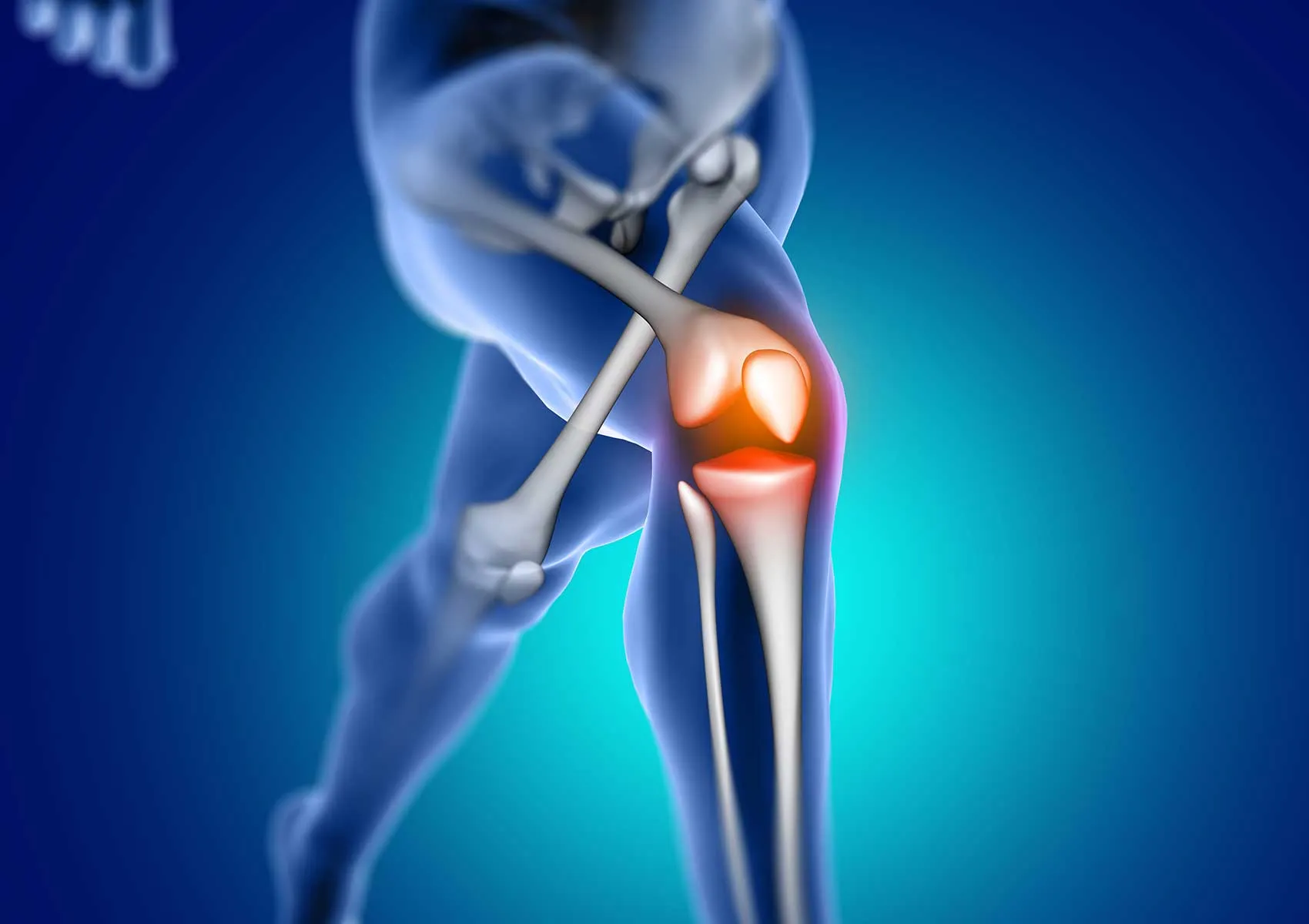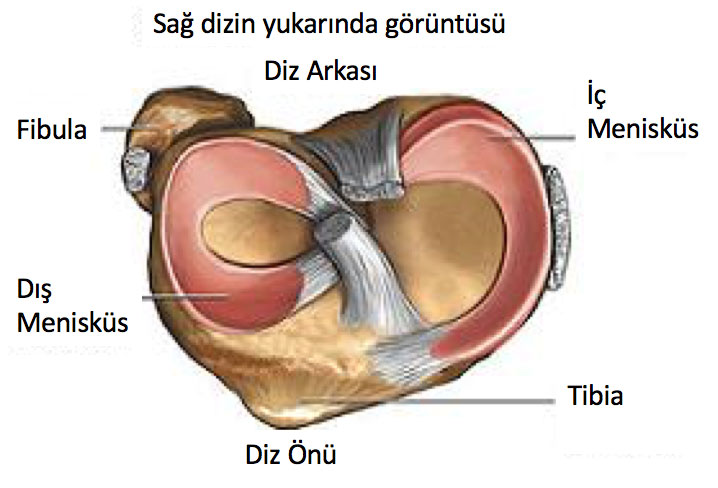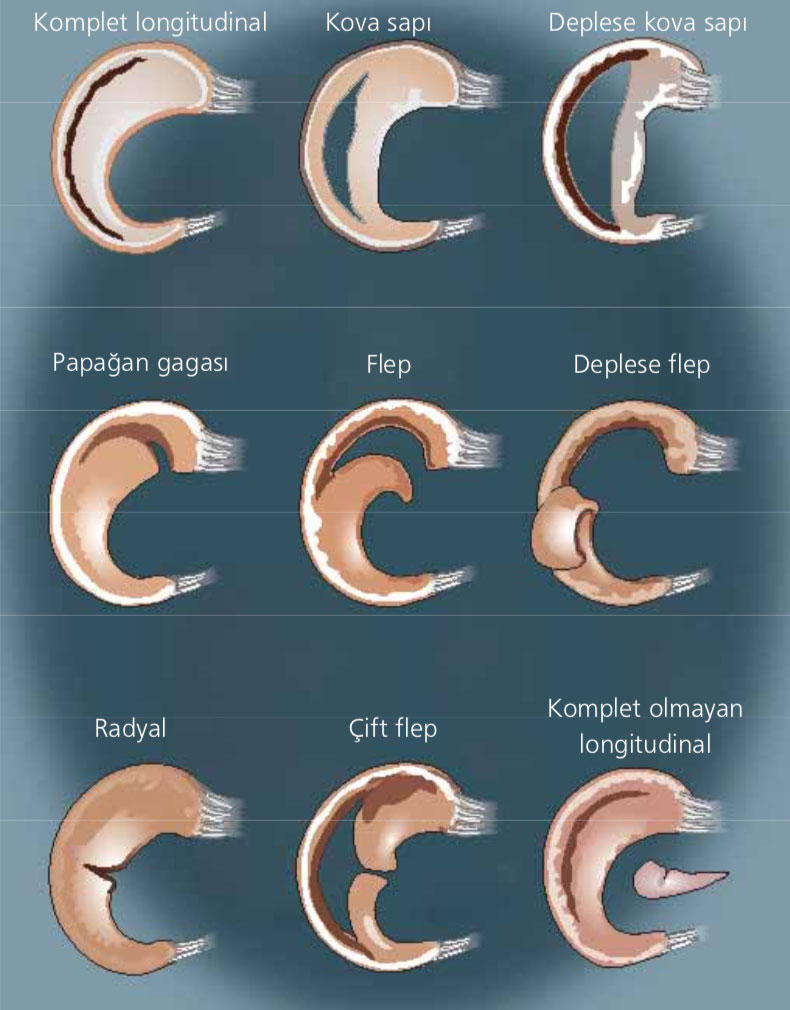- Mon - Sat: 9:00
- Call Us: +90 (538) 894 00 91
- [email protected]

Meniscus Tears
Menisci are C-shaped fibrocartilage structures in the knee joint, with two menisci: the medial (inner) and lateral (outer) meniscus.
The meniscus tissue has limited vascularization from a histological perspective. Therefore, tears located near the inner third of the knee joint typically lack the ability to heal naturally. However, tears closer to the outer part of the joint (near the joint capsule) have a higher healing potential.

Figure 1: Appearance of the menisci
The menisci play critical roles in the knee joint, including load transmission, shock absorption, and enhancing joint conformity. Preserving the meniscus tissue is essential for the survival of articular cartilage. It is known that in patients with loss of meniscus tissue, degenerative arthritis (osteoarthritis) of the joint develops more rapidly.
Meniscus tears are among the most common pathologies in the knee joint. Generally, meniscus tears are classified into two types: degenerative (wear-related) and traumatic tears.
Degenerative meniscus tears are commonly seen in middle-aged or older patients. They can occur during daily activities such as descending stairs or squatting. Non-surgical treatments should be the first line of treatment for these patients.
Traumatic tears are more common in young to middle-aged patients, often resulting from sports injuries, and are frequently accompanied by additional injuries such as anterior cruciate ligament (ACL) or medial collateral ligament (MCL) tears.
Meniscus tears most commonly present with knee pain. The pain in the joint may be pronounced along the joint line over the medial or lateral meniscus. In traumatic tears or degenerative tears causing mechanical symptoms, swelling may develop within the joint. Additionally, symptoms such as restricted knee movement or locking of the knee may occur.
Patients with similar complaints should be evaluated by an orthopedist. Following a targeted examination, standing knee X-rays and a standard knee MRI (magnetic resonance imaging) can diagnose meniscus tears.

Figure 2: Meniscus tears can occur in various types.
Degenerative meniscus tears are commonly seen in middle-aged or older patients and may occur during daily activities such as descending stairs or squatting. Non-surgical treatments (anti-inflammatory medications, rest, physical therapy, intra-articular injections) should be the first approach for these patients. In patients with persistent symptoms after 6 weeks of non-surgical treatment and without advanced degenerative changes, surgical treatment may be considered.
Traumatic tears are more common in young to middle-aged patients, often resulting from sports injuries. These tears are frequently accompanied by injuries such as ACL or MCL tears. The treatment decision is based on several factors, including associated injuries, the timing, location, size, and type of the meniscus tear.
In the surgical treatment of meniscus tears, the primary goal is to preserve the meniscus tissue. Accordingly, treatments for meniscus tears may include partial meniscectomy (partial removal of the meniscus), meniscus repair, meniscus scaffold (s Energiesynthetic meniscus tissue) applications, and meniscus transplantation.
Meniscus surgical treatment is a fully arthroscopic (closed) procedure that yields highly satisfactory results in suitable patients and in experienced hands.
Patients who undergo meniscectomy can stand and walk with crutches on the same day. They can return home on the same day or after a one-day hospital stay, and with physical therapy exercises, they can resume normal activities within 7-10 days.
In patients who undergo meniscus repair, the post-surgical period varies depending on the patient, the type and location of the tear, and any additional procedures performed (e.g., for cartilage issues). Each patient’s rehabilitation is tailored individually.
The return to sports after meniscus surgery depends on the procedure performed. For patients who undergo meniscectomy, a return to sports is possible by the third week. In patients who undergo meniscus repair, the return to sports takes longer. Depending on concurrent procedures (e.g., ACL reconstruction), this period may extend to 6-9 months. For patients who undergo only meniscus repair, a return to sports is possible after the fourth month.